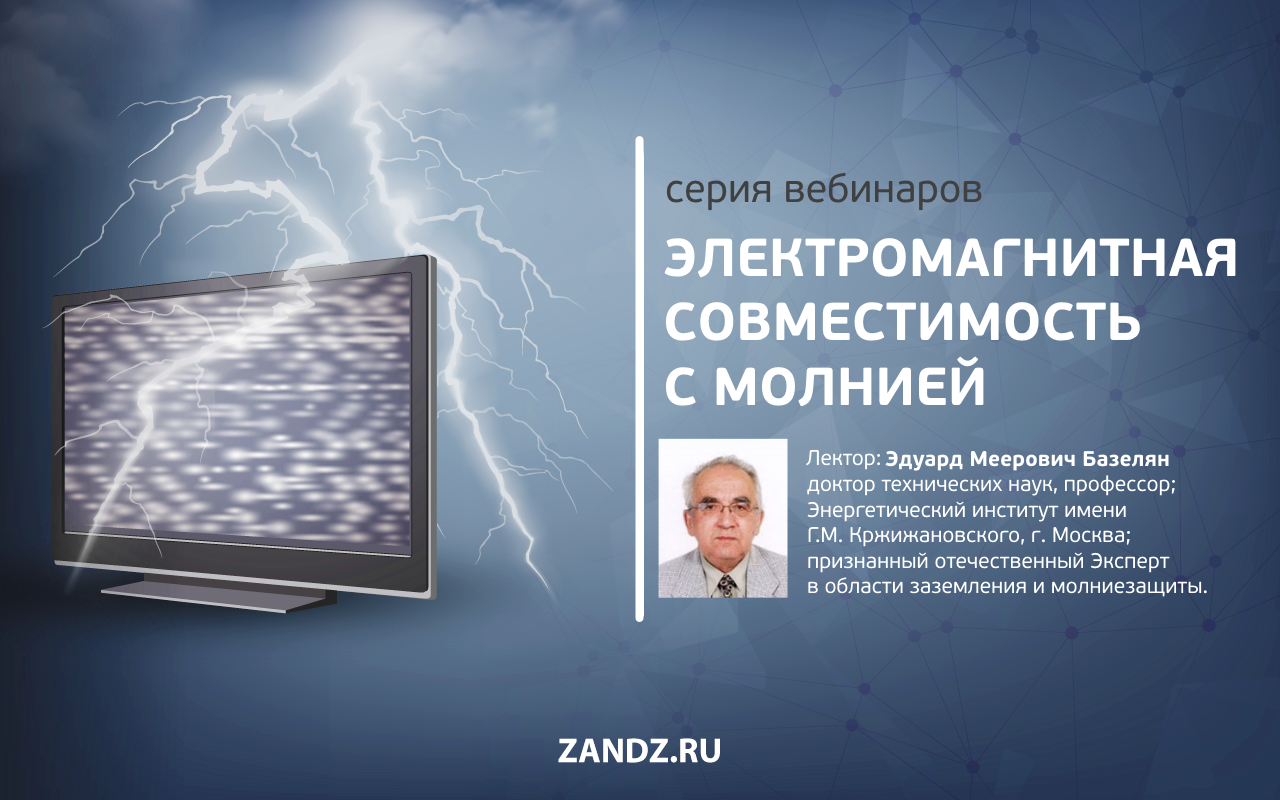On 5 September 2018 we held a webinar "Electromagentic compatibility with lightning. When and what SPDs to install?" by professor Eduard Meerovich Bazelyan from the Moscow Energy Institute to the name of Krzhyzhanovsky. We offer answers to the most interesting questions, asked during the webnar, to your attention.

1. Arkhipov Viktor Alexeevich:
Eduard Meerovich, how to choose the protective fuse rating values installed before SPDs?
Answer: The fuse must pass the lightning current for which this SPD is intended without any damage, but it must burn from the follow current if the same SPD is not able to switch it off. Data about fuses relief are given in the webinar presentation. Unfortunately, both extreme currents are not connected with each other and the mentioned requirements can't always be satisfied. You have to choose among bad and worse.
2. Milyaev Valeriy:
How does a lightning charge influence RCDs? Or is it a separate topic?What happens in that case?
Answer: RCDs have no concern to the problem of electromagnetic compatibility with lightning. Time of their operation counts 10-15 ms, which is incomparably more than the slowest electromagentic pickup. Can they burn from lightning current? I suppose they can, but their real electric strength is unknown.
3. Kadyrov Ruslan:
Is it admissible to set not two to phase and neutral, but only one between the phase and the neutral and having grounded the neutral under the electric board in one-phase circuit, if the nearest pile with the repeated grounding is in 10 meters?
Answer: Your offer seems to be quite reasonable to me.
4. Kulikov Oleg Vladimirovich:
How to determine the possible lightning pulse? if the lightning stroke the cottage roof, broke through the roof, somehow got into the electric network on 1 floor and broke a part of pinout on the 1 floor?
I am also interested in the protection of PoE circuits and RS interfaces, SPD protection of data networking to the external points of equipment.
Answer: Nobody can determine pickup pulse in the cottage network, because nobody measured the pulse current of your lightning. But we can think of a possible sequence of events. If the cottage roof is dielectrical, after the break through, the lighting will continue its development and will achieve the "ground" via electric circuit wires. It did not have any other way.
It was practically the same in case with metal ungrounded roof.
If metal roof is grounded, there appeared voltage on the ground electrode, equal to the multiplication of the lightning current to the grounding resistance. It was hardly less than 10 Ohm in a cottage. That is why even the weakest lightning produced an overvoltage of dozens of kilovolts. It was more than enough for a 220 V circuit.
5. Kharisov Ilnur:
How to protect equipment from overvoltage which will come via Main Grounding Bus (PEN bus)? Judging by the SPD connection scheme, SPD protects only phase conductors (TN-C system) or phase conductors and N conductor (TN-S system).
Answer. Second option is more preferable. It is recommended in all the regulatory documents.
6. Krivulets Igor:
Can I set an automatic circuit breaker instead of a fuse? If yes, how to choose it? Example: Incoming switch for 100A, what fuse value shall I choose for SPD?
Answer. We spoke a lot about complete disability of incoming switches installed consecutively with SPD. Any incoming switch has an electromagnet with a decent inductivity, the voltage on it is summarized with the SPD voltage and completely excludes the protective action of the device. You can watch the webinar video from minute 49.
Learn more about upcoming ZANDZ webinars.
See also:
[ Код новостного блока для вставки на Ваш сайт ] [ RSS лента для подписки на новости ]

